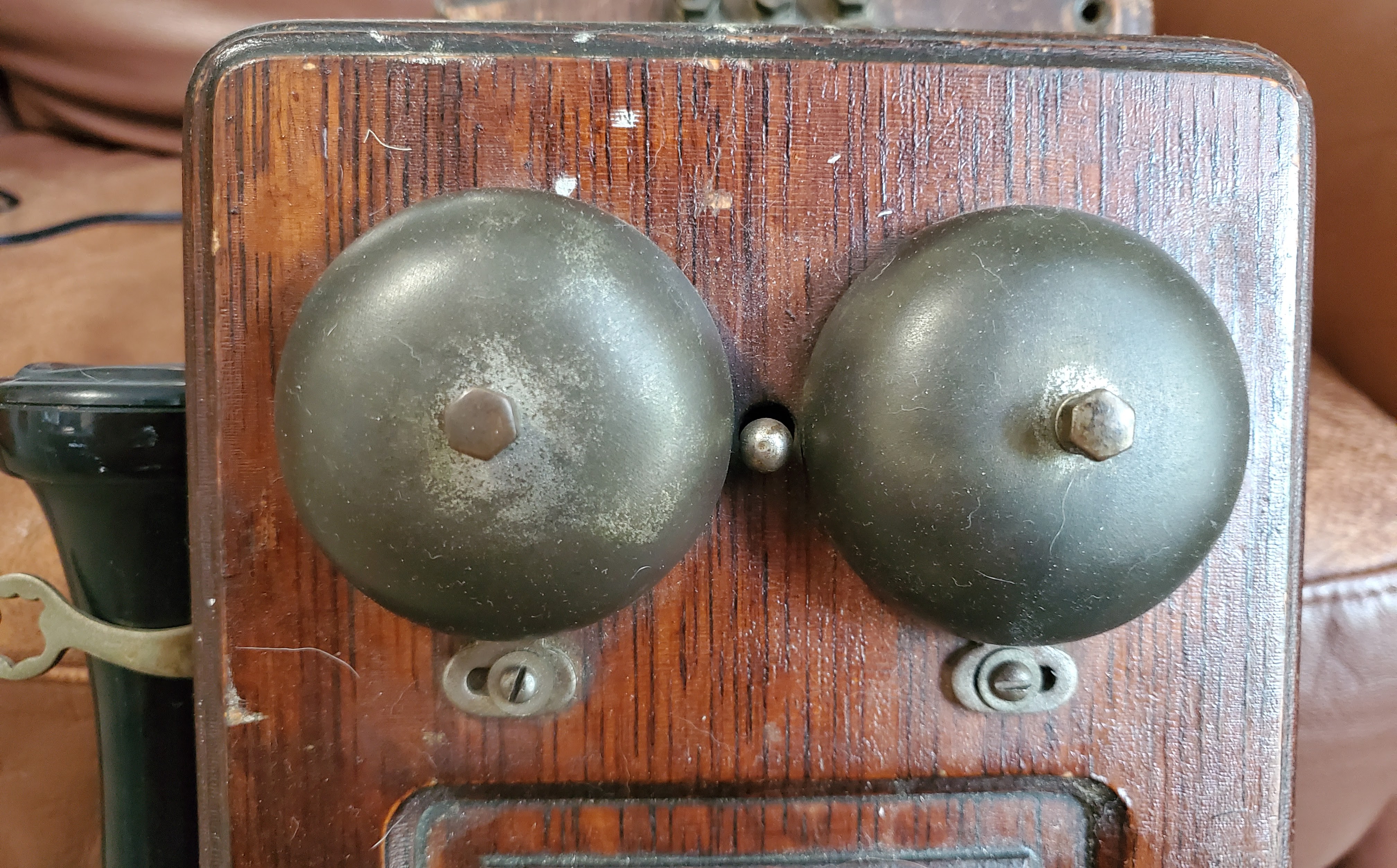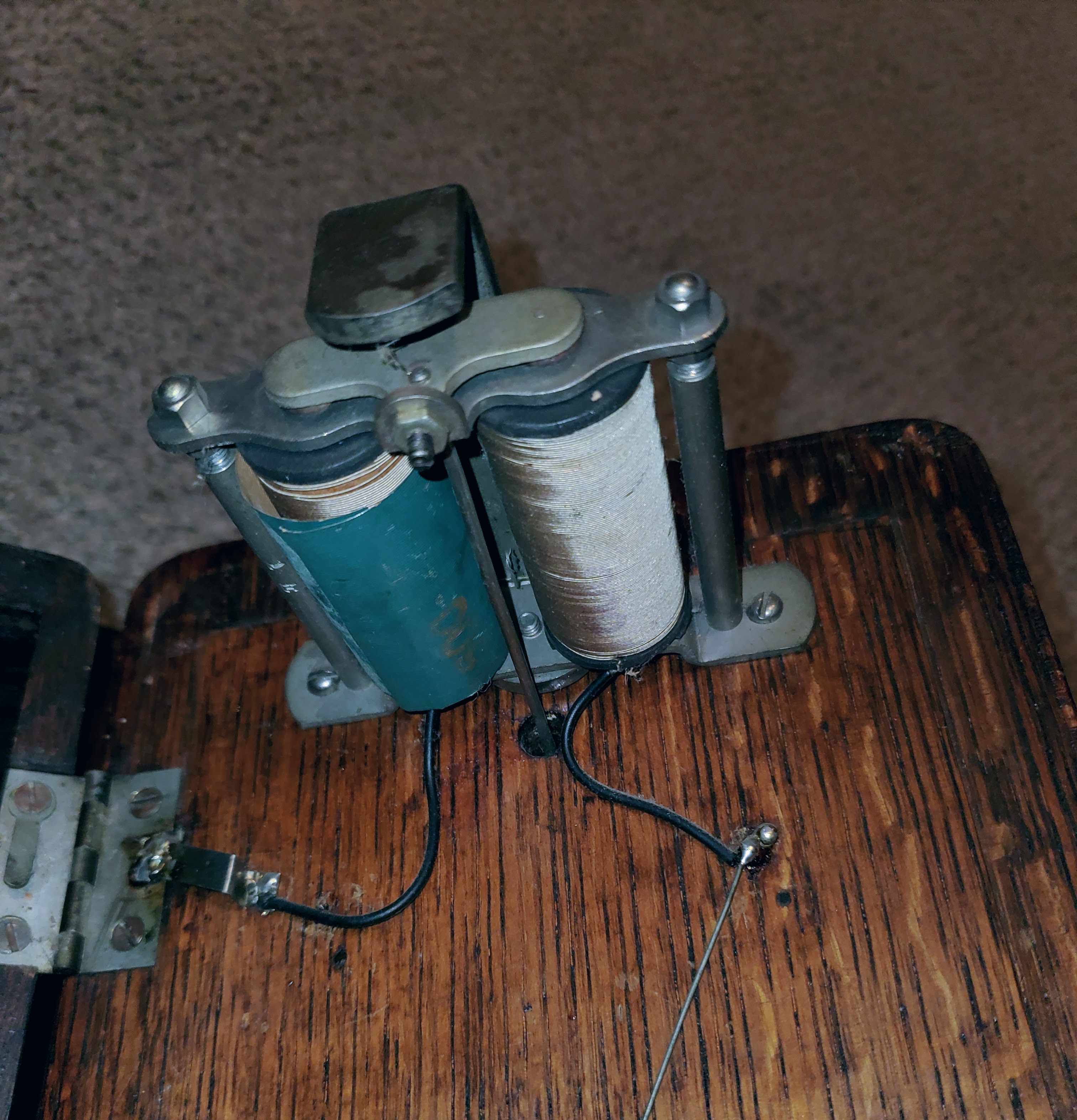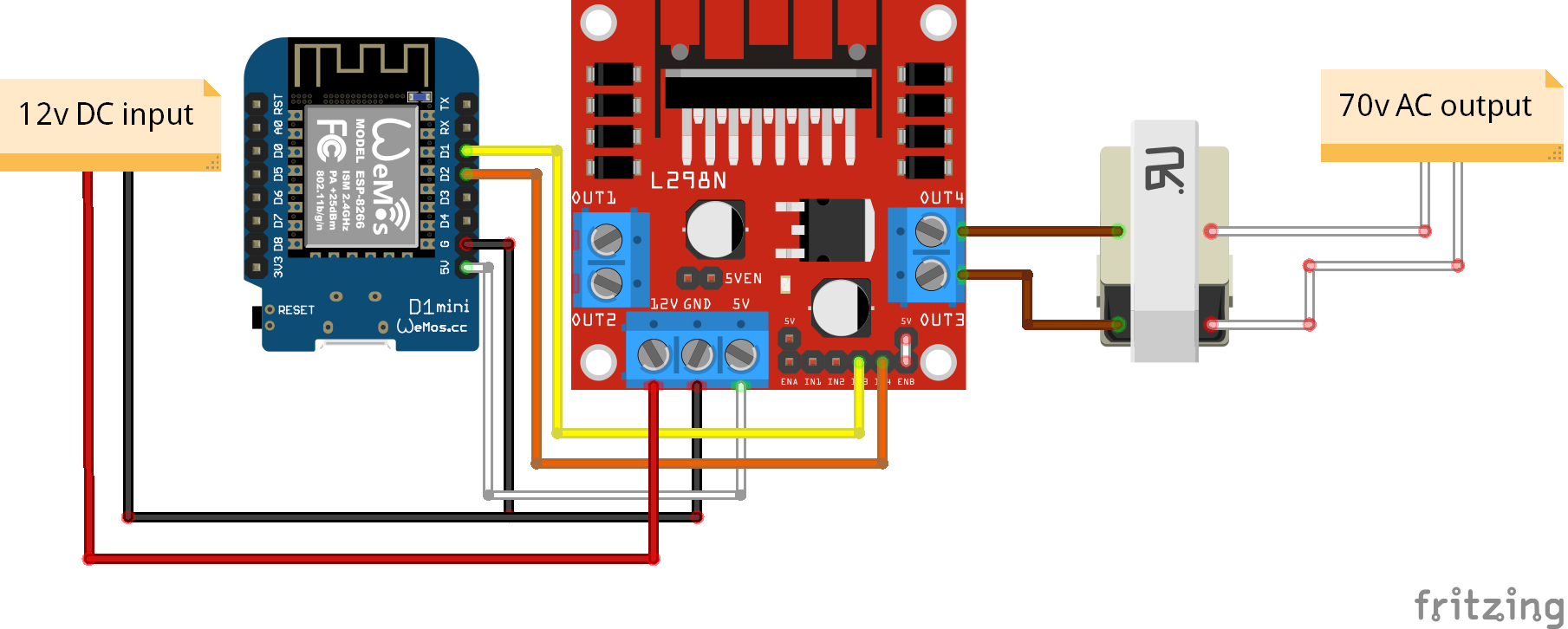Ringing the 100+ year old bells turned out to be one of the more challenging things to accomplish. Due to the vast distances that signals had to travel to reach rural subscribers in the late 1890's, the ring signal is actually 90 volts AC at ~20Hz. Generating this from 5-12v DC is not the easiest thing to do.


There are a number of varyingly complicated 'ring generator' circuits that are available online including one developed by Sparkfun engineers for their Bluetooth "Port-o-Rotary" phone, and one from "Bowden's Hobby Circuits" using a 556 timer + 120v -> 12v power transformer in reverse to step up the voltage.
Sparkfun Circuit

Bowden Circuit

I initially avoided the Sparkfun circuit due to the number of required components that I didn't already have on hand, and attempted the Bowden Circuit with a transformer I ordered from Amazon. Unfortunately, the Bowden Circuit did not work correctly; it did generate a pulse of some sort, but it seemed to be 20Hz DC and not AC. I wasn't quite sure how the circuit was supposed to be generating the negative portion of the AC wave anyway, which I think may have been the issue. Unfortunately I don't have an Oscilloscope to dig any deeper. Only one magnet coil on the phone seemed to activate with this circuit which may have been designed for a later phone with only one coil.
I did some more research online and found someone recommending an H-Bridge circuit to produce 12v AC from 12v DC and then running that through the backwards transformer to step the 12v AC up to 70v AC. I set this up using an L298N H-Bridge Motor Controller that I had from another project. I fed it a 20Hz AC Square Wave from two pins on an Wemos D1 Mini and it output a constant 70v AC. I attached the bells to the high voltage side and they rang perfectly!

I had initially planned to replace the D1 Mini with a single chip or something smaller, but it ended up fitting just fine into the fake battery so I left it as is. This entire 'ring generator' circuit is self contained and powered by a relay controlled by the Raspberry Pi in the other fake battery. This ensures that the high voltage circuit is always powered off unless turned on by the computer and actively ringing, making the phone safe to open while not ringing. There is a door sensor connected to the RPi that will not allow it to ring when the door is open as the high voltage wires are exposed and not insulated.
 Jon
Jon
Discussions
Become a Hackaday.io Member
Create an account to leave a comment. Already have an account? Log In.